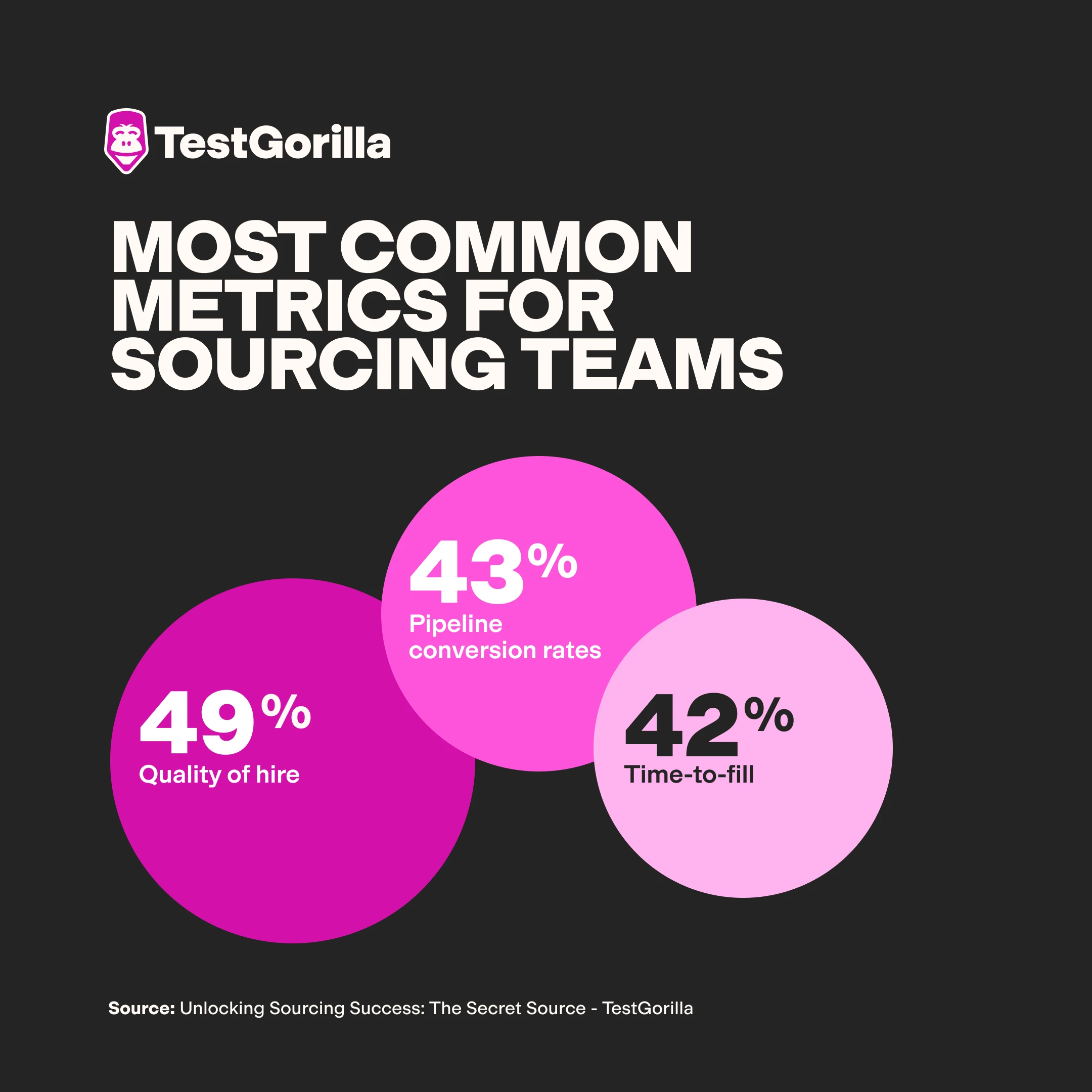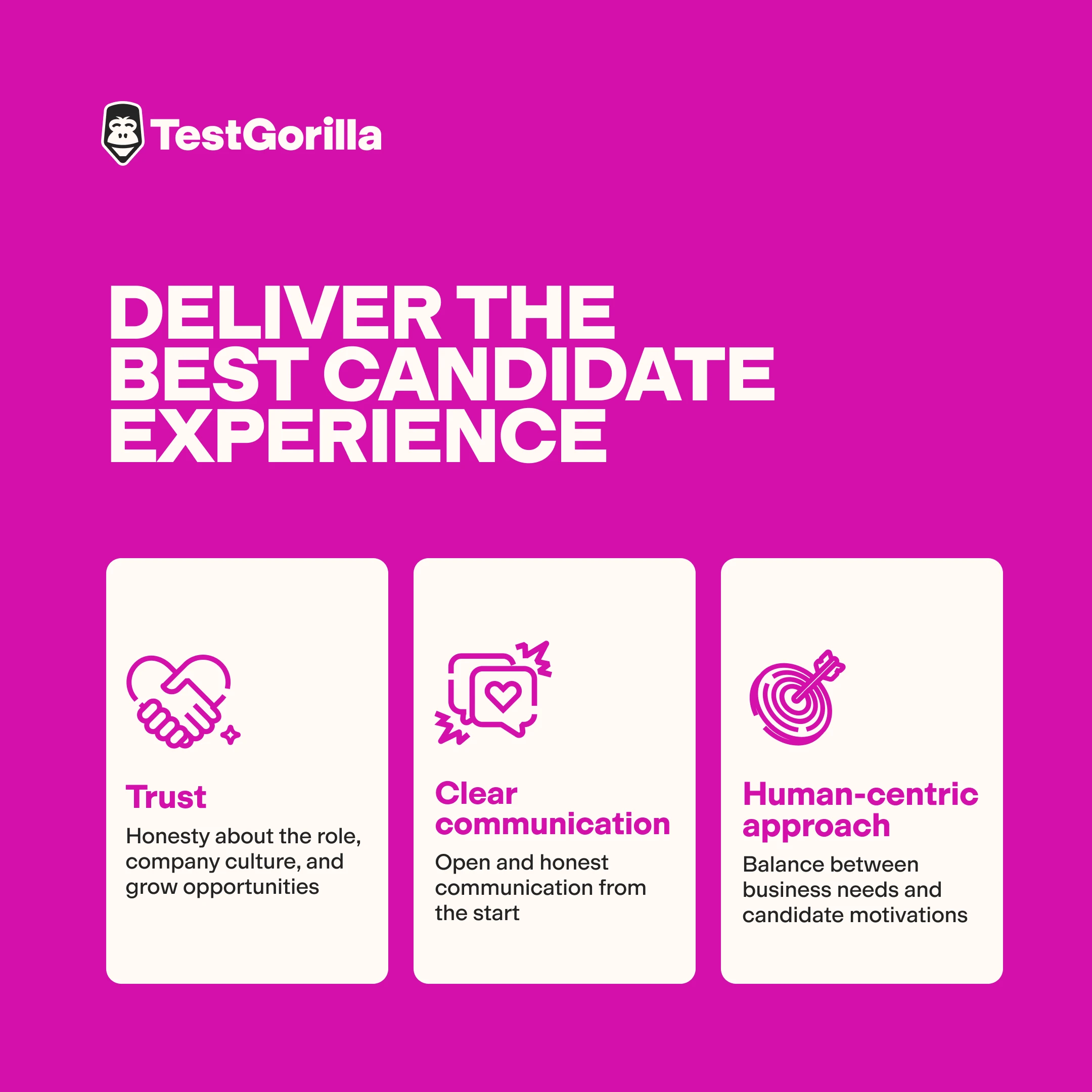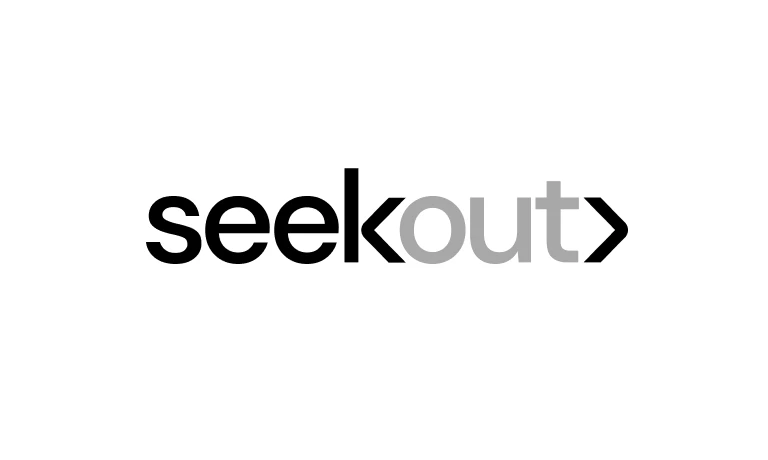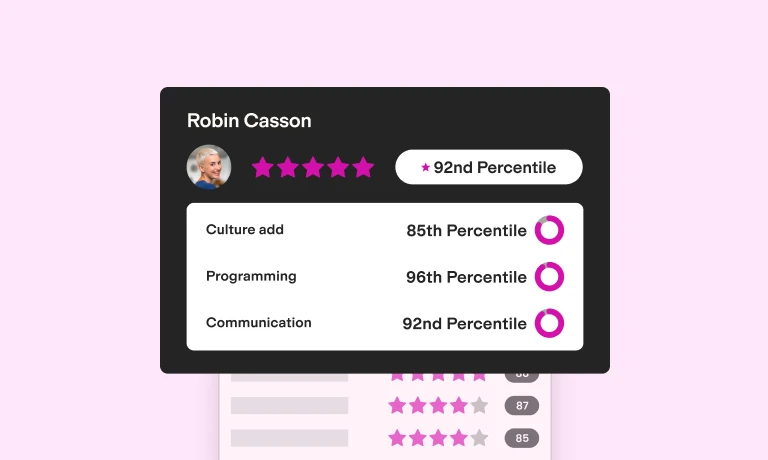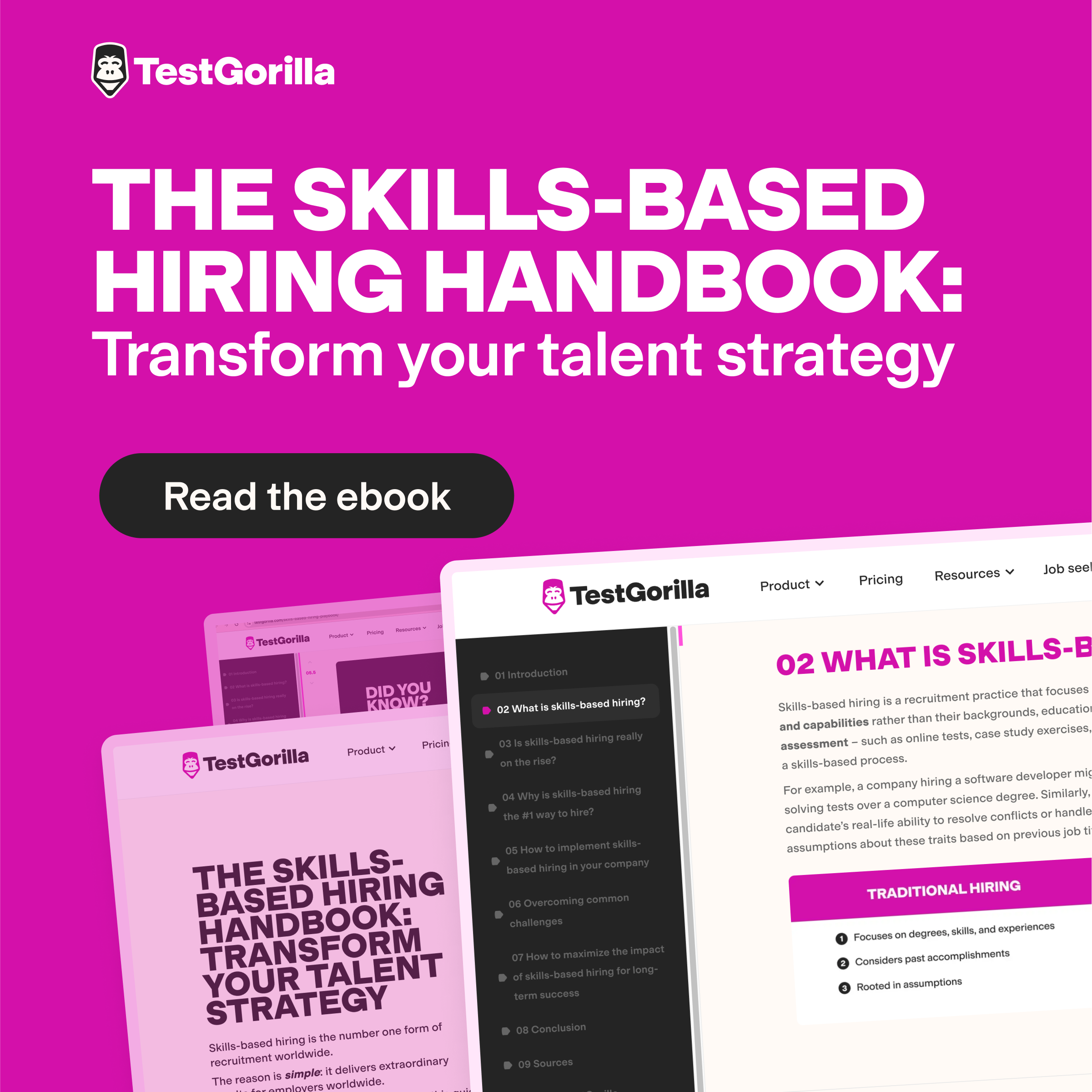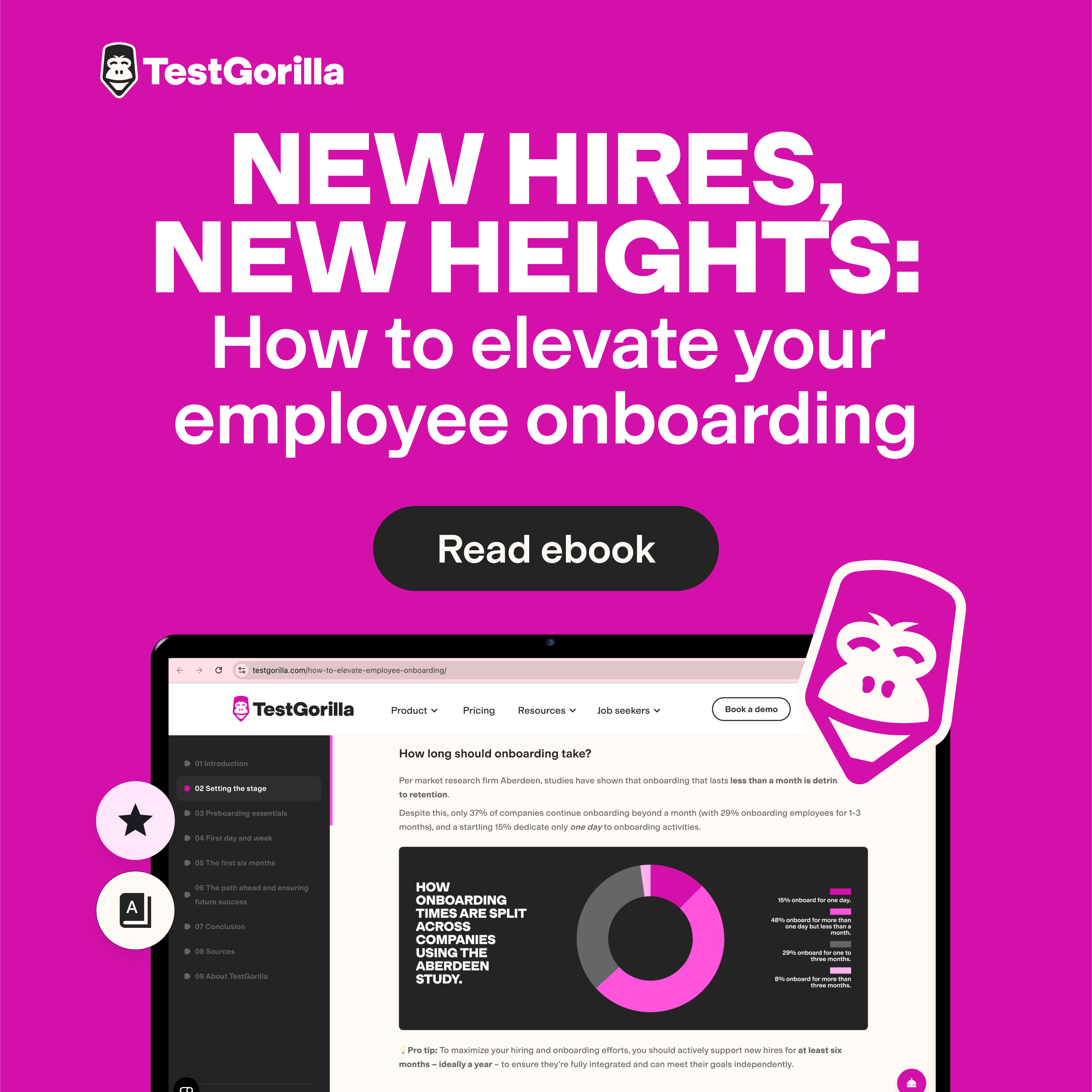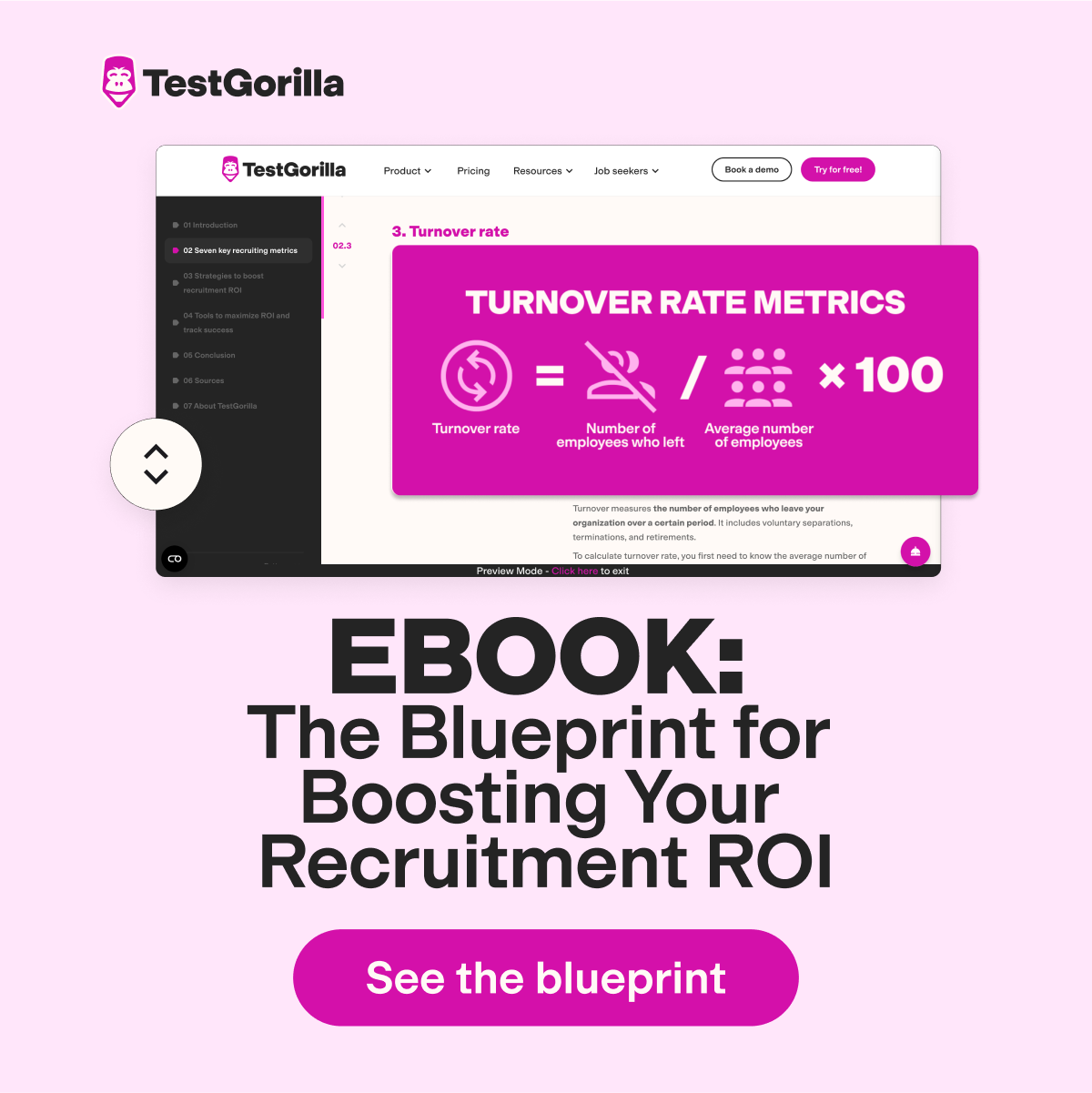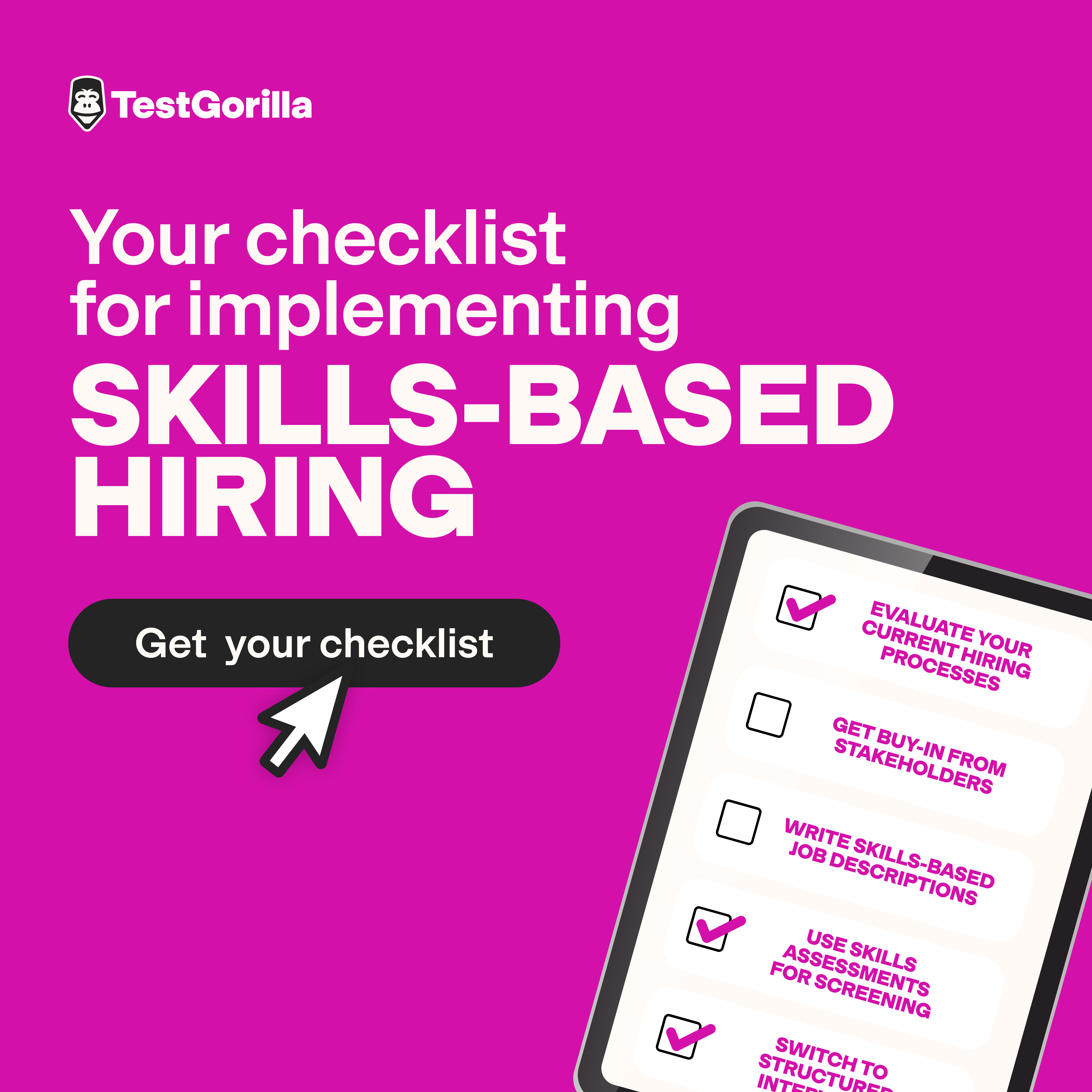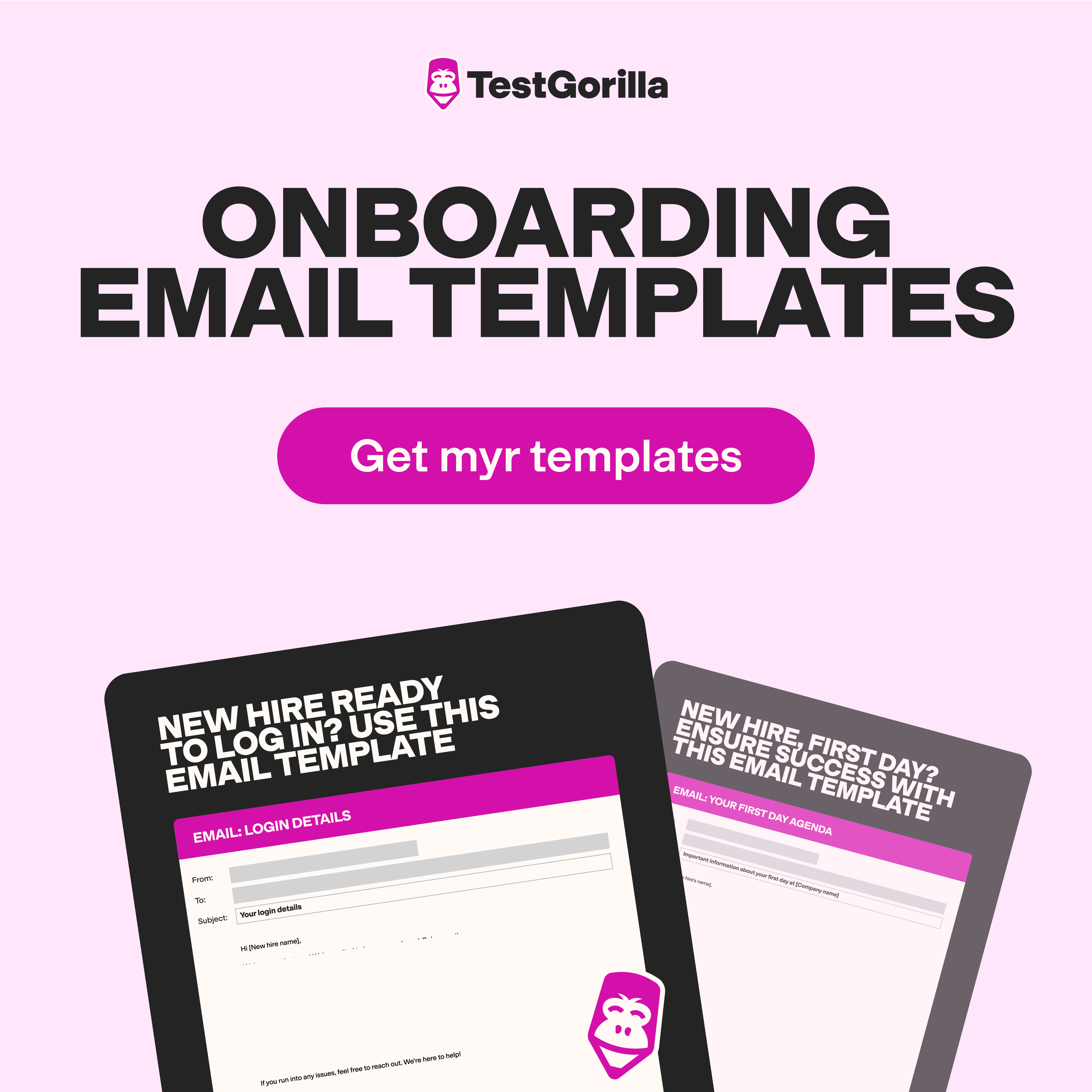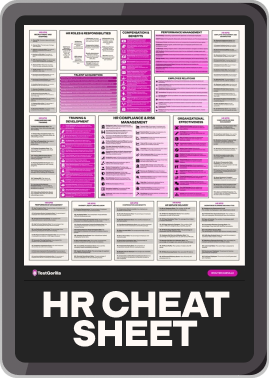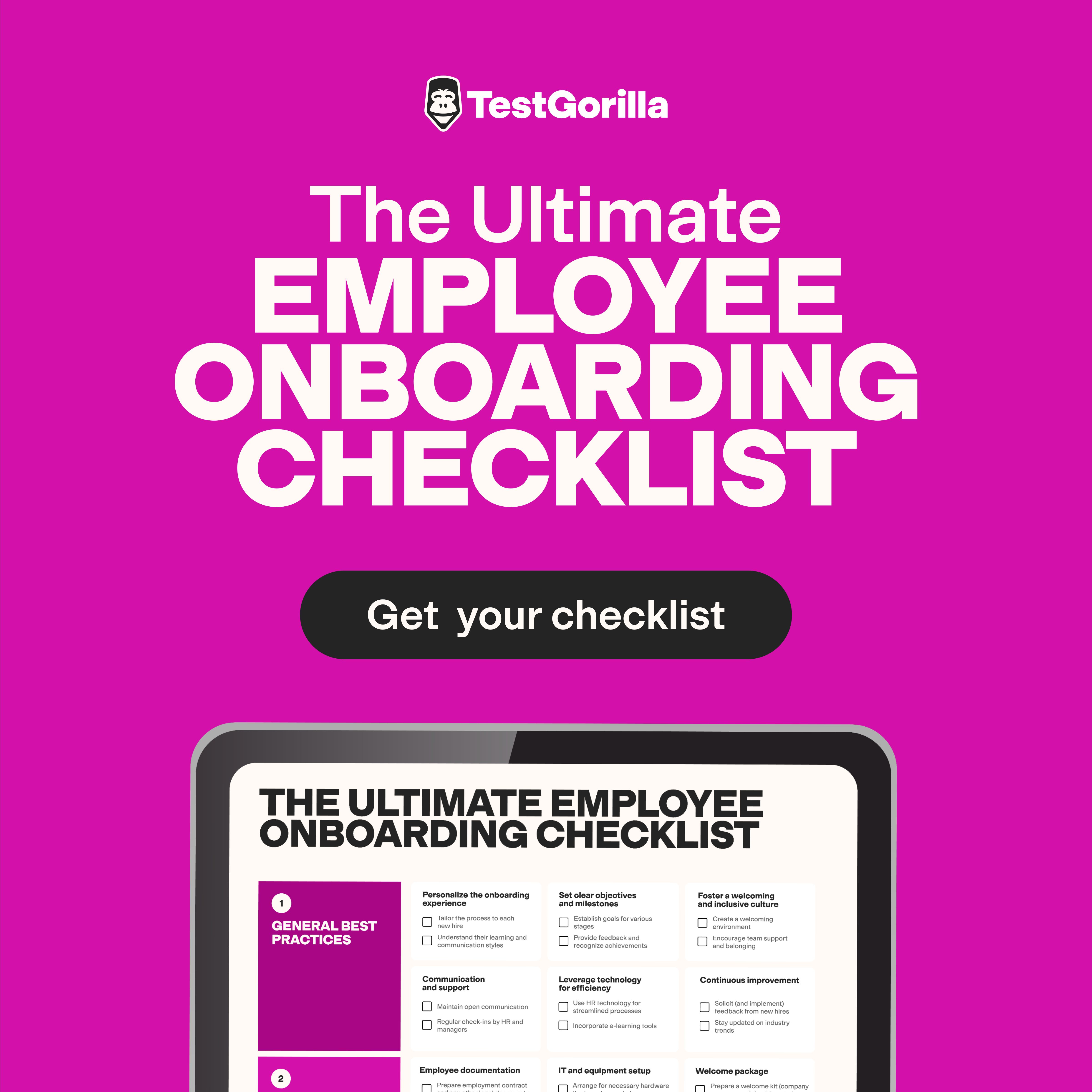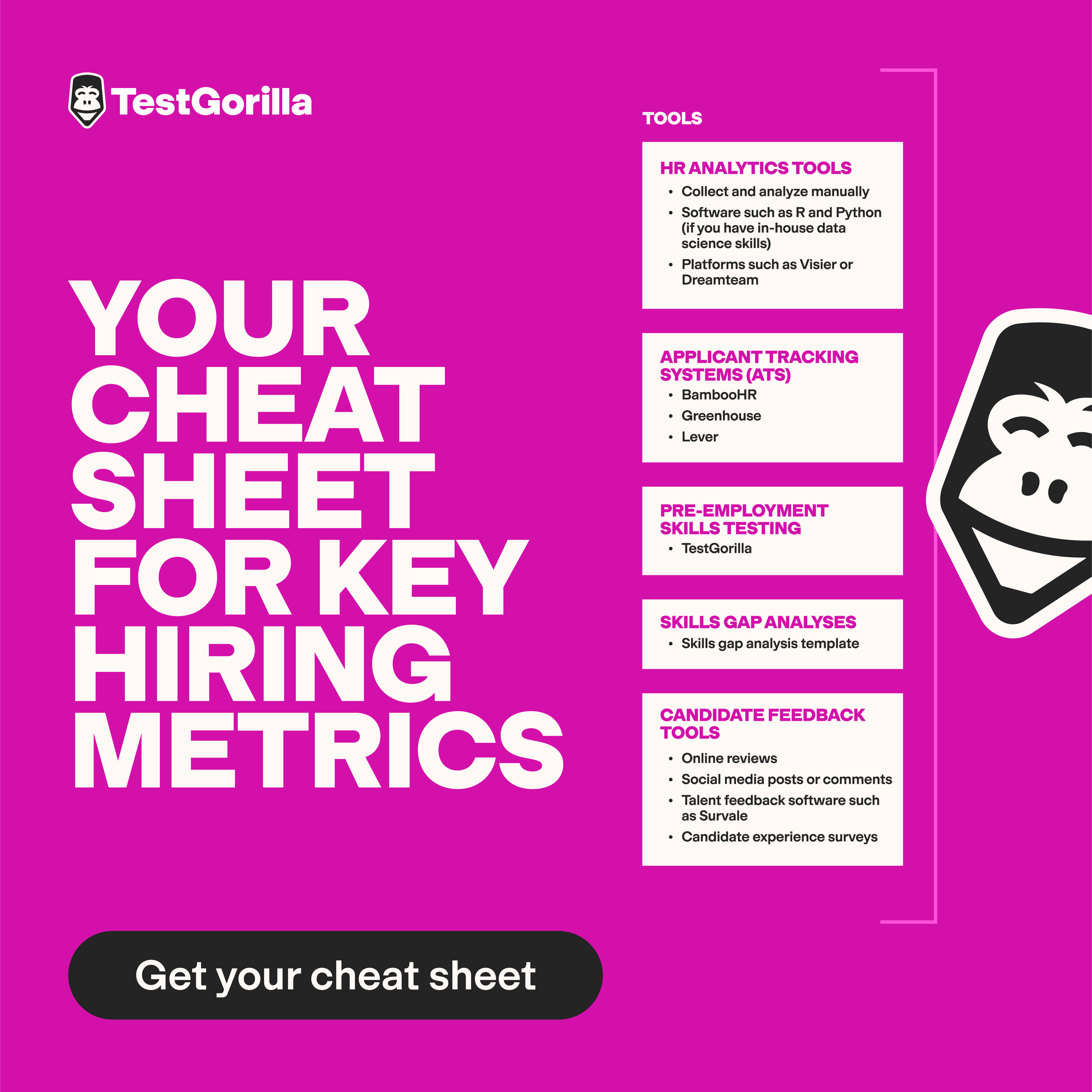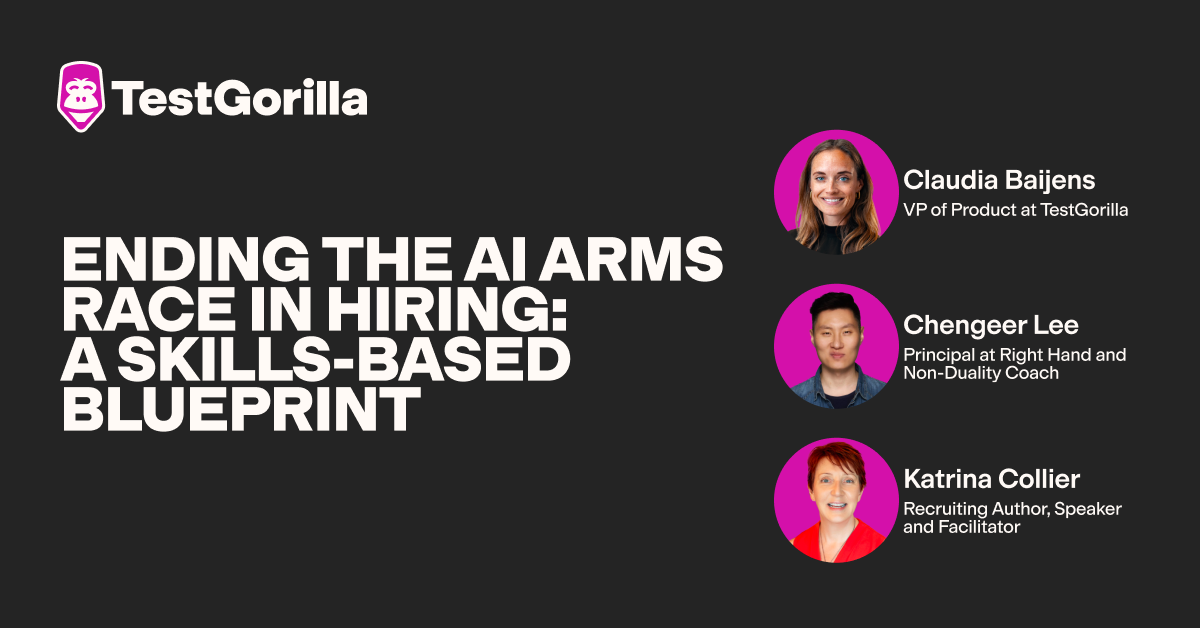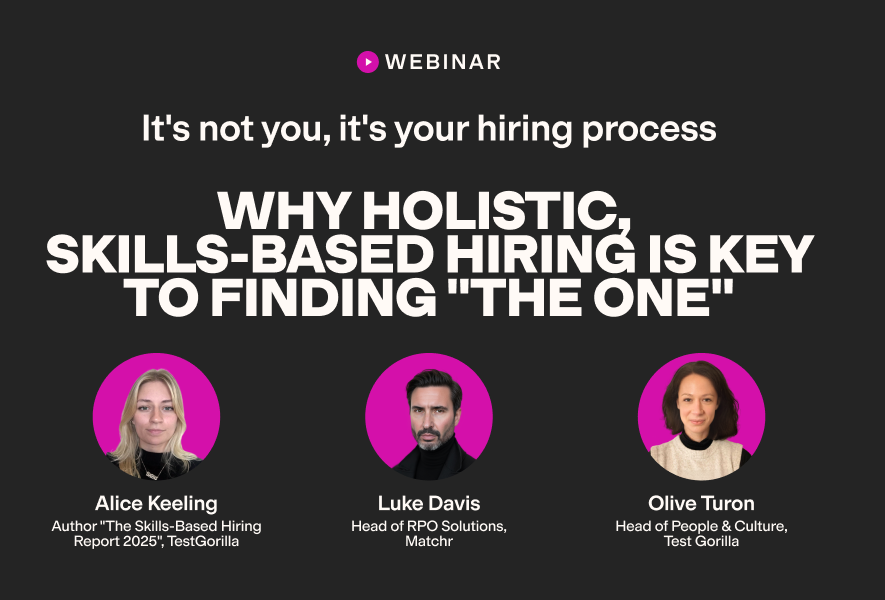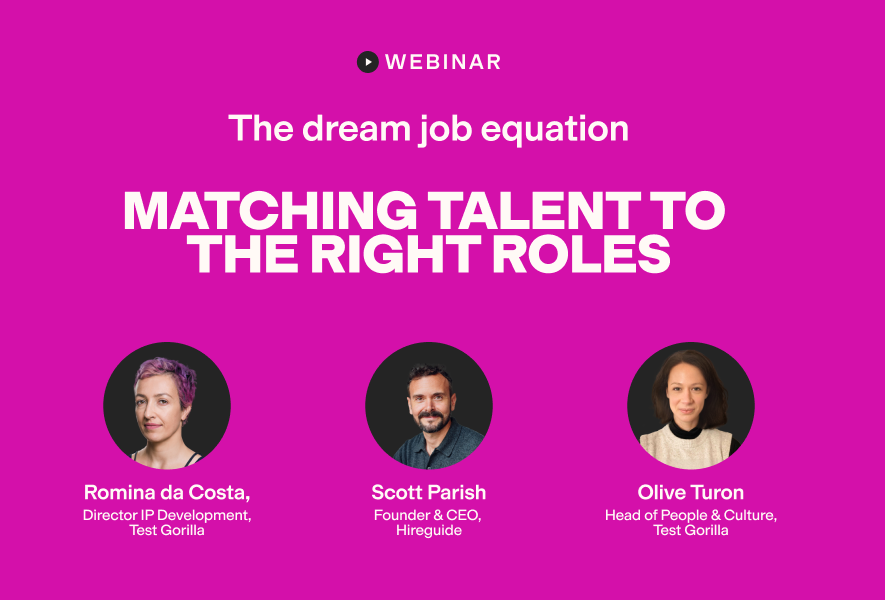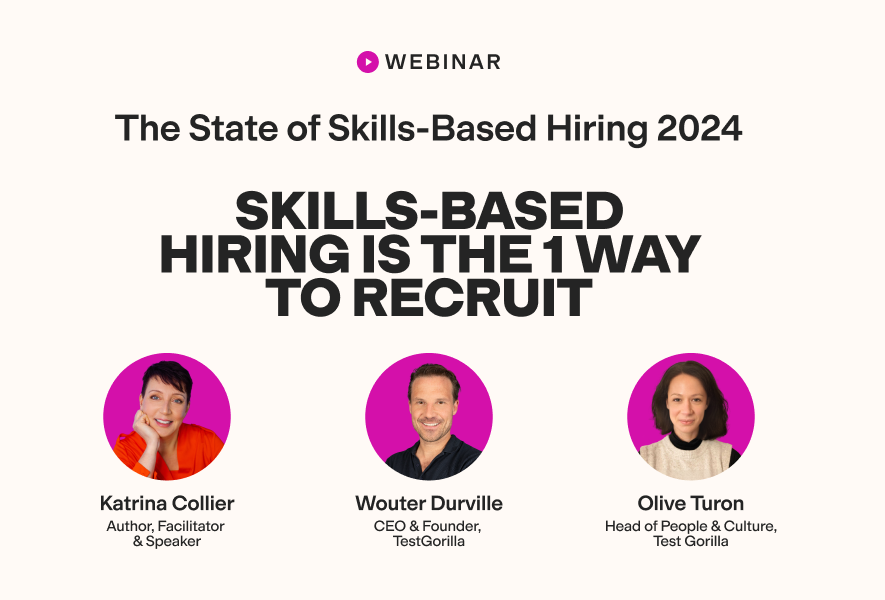Meet these 8 experts who reveal the keys to talent acquisition success
In our recent report, “Unlocking Sourcing Success: The Secret Source,” half of sourcing teams admit they struggle to find qualified candidates for open roles.
This is a worrying stat, given talent makes or breaks a business. So, what separates teams whose talent acquisition (TA) strategies fall flat from those who succeed?
To find out, we went straight to the experts. Here, eight TA leaders share their best strategies for sourcing, attracting, and hiring top talent. Their answers may change the way you think about TA.
Table of contents
- Skills-first talent acquisition wins the talent war
- Talent acquisition for adaptability builds a future-ready workforce
- Metrics matter in talent acquisition
- Candidate experience is a talent acquisition game-changer
- Aligning talent acquisition strategies to broaden talent funnels
- Use these insights to unlock talent acquisition success
- Contributors
Skills-first talent acquisition wins the talent war
Increasingly, TA teams are adopting skills-based hiring and reaping the benefits.
Nina Baker, director of business operations, describes it as a future-facing, proven strategy. She’s seen this first-hand. A client had spent more than six months looking for a Senior Human Resources Manager without success. While candidates had industry experience, they lacked the strategic partnership skills the client needed.
Her solution? “By focusing on skills-first criteria (strategic HR leadership and the ability to align people strategy with business goals), we identified and secured a candidate from an adjacent industry who fit the desired ‘future-state’ of the function.”
The results were striking. “The role was successfully filled in 52 calendar days, compared to six months of prior unsuccessful efforts.”
Our own research suggests that 58% of sourcing teams struggle to verify candidates’ skills. A skills-based approach can help solve this problem, allowing employers to hire holistically from day one, taking into account candidates’ technical and soft skills, as well as their cultural and motivational fit. Employers responding to an earlier survey we ran reported seeing measurable benefits with this approach, including improved performance (60%), better retention (50%), and stronger team cohesion (58%).
Suhail Patel, director at Dustro, shared a practical insight into how a skills-based approach transformed his TA success. “We stopped filtering resumes so much and switched to project-based trials for some jobs. The change was easy, but it increased retention by almost 25% in the first year.”
Talent acquisition for adaptability builds a future-ready workforce
Skills-based hiring is a good start, but the next question is, what skills matter most?
Nicola Leiper, founder and head of project management, says, “The single most important factor driving talent acquisition success today is hiring for adaptability and long-term growth potential.”
In the context of a rapidly changing workforce – and world more broadly – the World Economic Forum anticipates that 39% of key skill requirements for jobs will change by 2030.
Nicola explains, “Roles are changing faster now due to the use of AI-driven tools, changing market demands, and flatter team structures, so having someone who can step into new responsibilities without having to wait for full retraining has become essential.”
McKinsey research confirms this. Adaptable and resilient employees are three times more engaged and nearly four times more likely to report being more innovative.
Nicola has seen the impact herself. Last year, she hired a new service line team based on how they approach uncertainty and their ability to adapt.
Six months in, “They were finishing projects 25% faster than our older teams and two were being promoted into lead roles. Selecting for adaptability is a direct driver of success because they could master new systems rapidly and increase the performance of everyone around them.”
The best insights on HR and recruitment, delivered to your inbox.
Biweekly updates. No spam. Unsubscribe any time.
Metrics matter in talent acquisition
You can’t improve what you don’t measure. Yet, according to our research, 51% of sourcing teams say they’re “not at all” or only “somewhat” confident of their ability to track and report metrics.
This is a missed opportunity. Metrics help you open the hood on your TA strategies, see what is and isn’t working, and make any necessary tune-ups. They can also help advocate for greater investment in sourcing when talking to hiring managers and other stakeholders.
Our survey found the most common metrics for sourcing teams are:
Quality of hire (49%)
Pipeline conversion rates (43%)
Time-to-fill (42%)
It’s important to remember, though, that “There’s no single formula or foolproof process to measure success in TA,” according to Anna Galve, recruitment director. Instead, you need to choose relevant ones that align with your TA strategies and broader organizational goals.
For example, for Anna, “The strongest indicators are output-based metrics, specifically endorsements ready to be sent to the client and speed to fill the role. These measures align closely with business needs.”
If your priority is measuring whether hiring decisions offer lasting value, follow Nicola Leiper’s approach. “I measure the success of talent acquisition by retention, speed of promotion and performance gains within the first year.”
In the context of executive TA, Nina Baker says the metrics that matter most are quality of hire, business impact, cultural fit, and leadership effectiveness.
And for B2B roles? Taras Tymoshchuk, CEO and co-founder, says, “We keep data not only on where the candidates come from (portals, advertising, LinkedIn, employees), but also on how high-quality they are: retention after 6 months, productivity, time to productivity. This allowed us to close budget ‘holes’ when certain channels provided many candidates but low productivity.”
Candidate experience is a talent acquisition game-changer
Our experts agree that a positive candidate experience is critical. As Doug Crawford, president, says, “A candidate's experience is the driving force behind talent acquisition success in today's environment.”
A good candidate experience during the sourcing and recruiting process has a huge impact down the track.
Gallup research confirms that employees who have a stand-out candidate experience are 3.2 times as likely to strongly agree that they feel a connection to the business’s culture and three times as likely to be extremely satisfied with their work. This boosts engagement, productivity, and retention.
Conversely, negative experiences increase candidate drop-off and damage your employer branding.
Our experts shared several suggestions for delivering the best candidate experience possible:
Trust. Suhail Patel says, “Candidates want you to be honest about the role, the company culture, and the ways they can grow. Trust is more important than any signing bonus.”
Clear communication. According to Doug Crawford, “From the beginning, when a candidate applies, there should be open and honest communication. This is to build trust and let them feel valued not just as applicants but also as human beings.” Luke Davis, head of RPO solutions, adds, “There is literally no excuse now for not giving candidates communication. An automated email, something respectful, even just to let you know you’re not continuing, makes a huge difference.”
A human-centric approach. Anna Galve advocates for striking a balance between business needs and candidate motivations. “So instead of asking, 'What does the business need?' we should also ask, 'What will make this opportunity practical and beneficial for the candidate?’” she says. “This is important because people are complex and unique in every way, yet what most share is the desire for growth and for work that makes sense in their lives.”
Aligning talent acquisition strategies to broaden talent funnels
According to Nina Baker, “The most critical driver of TA success today is alignment between talent strategy and business strategy.”
Our experts shared strategies that have worked well for them.
Anna Galve says dividing responsibilities is central to her approach. “One example is creating different pathways to identify top talent, combining both active and passive sourcing, while having dedicated interviewers who are knowledgeable and quick-witted. By combining these approaches, we broaden the talent pool while maintaining a high-quality candidate pipeline.”
Our own Head of People and Culture, Olive Turon, has a novel yet simple strategy for broadening talent funnels. “Add a flag on the job description that says: if you see yourself represented in a few of these bullet points but not all of them, apply anyway.”
This is a great way to encourage more female candidates to apply, given the often-cited stat that men apply for a role when they meet 60% of the criteria, while women only do so when they meet 100% of them.
For Taras Tymoshchuk, thinking outside the box is key. “For the Front-end role, we held an online challenge once a quarter: a 24-hour project where candidates worked on tasks, and the winner received an offer or priority in hiring. This attracted very strong candidates and helped identify those who can work under tight deadlines.”
Luke Davis’ final tip is to remain open-minded about “wild card” candidates.
“I had an agency leader who insisted that instead of sending the standard three CVs to a job that we send a 4th one,” he says. “And at the time I was like, you know, what a waste of time we're creating expectations for people with jobs they're not going to get. Data showed that the extra 4th candidate that we shared 25% of them actually got the job, and that left a really indelible mark for me.”
Recommended reading: Top 9 talent acquisition strategies for 2025
Use these insights to unlock talent acquisition success
When reviewing your TA strategies, start with our experts’ advice.
The future of TA success belongs to teams that adopt a skills-based approach, prioritize adaptability, track the right metrics, deliver a top-tier candidate experience, and align TA strategies to broaden talent funnels.
These are your keys to unlocking TA success so you can hire better today and build a stronger, more committed, and adaptive workforce for the future.
Contributors
Nina Baker, Summit Search Consultants, director of business operations
Suhail Patel, Dustro, director b
Nicola Leiper, Espresso Translations, founder and head of project management
Anna Galve, LevelUp, recruitment director
Taras Tymoshchuk, Geniusee, CEO and co-founder
Doug Crawford, Best-Trade-Schools.net, president
Luke Davis, Matchr, head of RPO solutions
Olive Turon, TestGorilla, head of people and culture
You've scrolled this far
Why not try TestGorilla for free, and see what happens when you put skills first.


